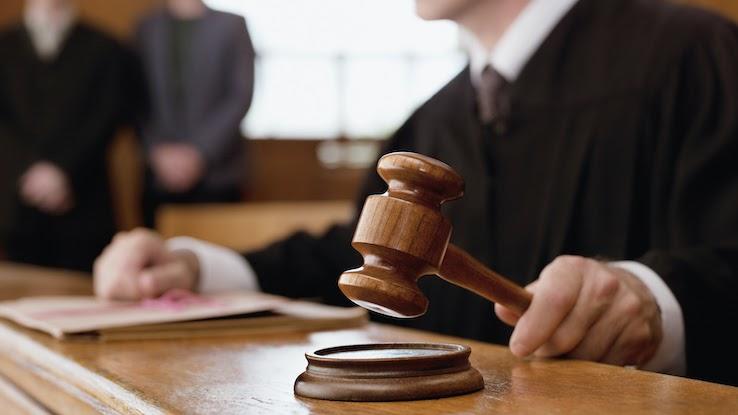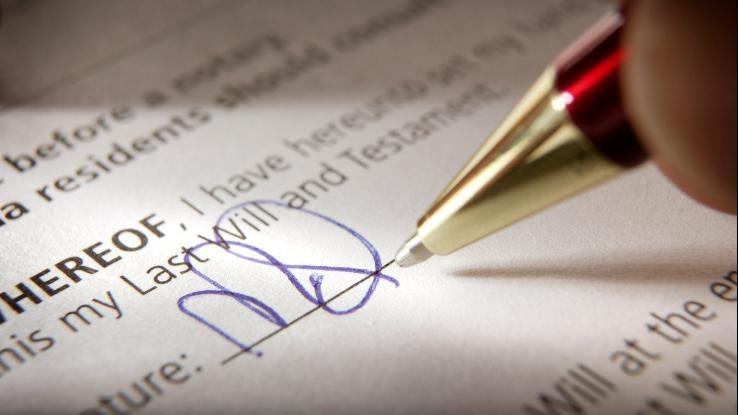Estate Planning 101: How to Probate a Will

Estate planning is a sensitive subject that can be difficult to navigate. It involves topics people don’t often like to think about and processes that are complex. But engaging in estate planning is essential for protecting not only the things that you care about but also the loved ones who’ll receive them upon your passing.
Writing a will is a critical element of estate planning, and the probate process is often a critical follow-up element of proving your will’s validity and settling your estate. Understanding more about what probate is, along with some of the specifics involved in it, can help you better anticipate what your loved ones will go through — or what you may need to handle if you’re the executor of someone’s will.
What Is Probate?
Probate is the legal process that takes place after someone dies to determine how the assets they owned at death will get distributed to people. In understanding probate, looking at the definition the American Bar Association (ABA) uses is helpful because it breaks the process of probate into several steps, ultimately making the concept more digestible. According to the ABA, probate is the “formal legal process that gives recognition to a will and appoints the executor or personal representative who will administer the estate and distribute the assets in the estate to the intended beneficiaries.”

Let’s break this down a little bit more. Giving recognition to a will essentially means that, in the eyes of the law, the deceased person’s will is determined to be valid — that they didn’t sign it under duress, that they were of sound mind when they signed it or that something else that could invalidate the will didn’t happen. Appointing an executor means the will names a person who will carry out the instructions in the will and distribute assets to the people to whom the deceased wants those assets to go to. Probate is the process of filing paperwork (and sometimes going to court) to ensure the deceased’s will is legal and that it is followed legally. It’s also the process of paying the deceased’s debts and distributing their assets.
Precisely how a will is probated will vary widely from situation to situation in at least five important ways. First, probate laws are set on a state-by-state basis, meaning that you’ll be required to complete different steps to meet varying legal requirements depending on your state. Second, different steps may be necessary depending on if the deceased had a will or died intestate, meaning they passed without a will. Third, different assets are handled differently. Fourth, executors are required to carry out the instructions that the deceased person outlined in their will, and these can vary widely from situation to situation. Finally, in many cases, probate may be rendered unnecessary by planning that the deceased did ahead of time.
What Are the Steps to Probate a Will?
The formal probate process includes six general steps. Remember that the particular tasks to complete at each step can vary widely from situation to situation and state to state. This outline assumes that the deceased left behind a will that appointed an executor who was alive at the time the deceased died.

Step One: Filing a Petition
The person named as executor in the will — that is, the person the deceased appointed to carry out their wishes after their death — must file a petition to a court in the county where the deceased lived. The petition is paperwork that asks the court to officially recognize the petitioner as the executor of the deceased’s estate. Along with the petition, the executor needs to file a copy of the deceased’s will and death certificate. If you’re the executor, the rules in your state will specify whom you need to tell that you’re filing this petition. At a hearing, the court will listen to any objections to the request and decide whether or not to legally authorize the executor to move forward with probating the will.
Step Two: Giving Notice
Assuming that the court granted your petition to act as executor, you’ll be required to notify different entities that the deceased’s estate is “being probated” or “in probate.” Each state’s laws specify precisely who needs to receive notice and how. In most situations, however, you’ll need to give notice to any potential creditors (people the deceased may have owed money to at the time of death), any potential beneficiaries mentioned in the will or any trusts created by the deceased. You may also need to notify any heirs — living relatives who may potentially be beneficiaries.
Step Three: Gathering the Estate’s Assets
An executor is responsible for identifying, finding and gathering up all the assets in the estate. This is anything the deceased owned at the time they died. Assets can include a wide variety of different things, such as balances in bank accounts; balances in retirement accounts; interests in pensions; investments such as stocks, bonds, certificates of deposit or precious metals; real estate (land and/or buildings); businesses; outstanding debts that other people owe the deceased; art and stamp collections; or personal effects and belongings.
This “gathering” stage can — in complex cases when the deceased has myriad investments and business interests — get confusing quickly. In these complex situations, you should obtain legal, financial and tax advice from qualified lawyers as soon as possible. You may also need to have certain assets inventoried and appraised before presenting these resources to the court.
Step Four: Paying the Estate’s Bills (and Taxes)
During the gathering process, you’ll also identify debts owed by the deceased. Those debts may be as simple as an IOU or personal loan from a relative, but they may also be amounts owed on a financed vehicle or a property’s mortgage. They may, in more complex cases, include things like business loans or payroll. Your job as an executor is to pay the deceased’s valid debts — not personally, but from the assets of the estate.
This can become very complex, depending on the assets — again justifying the recommendation that you seek professional legal advice on behalf of the deceased and their estate. Don’t forget during the payment of all of these bills that the deceased will need a final tax return filed. You or your advisors will have to prepare that return and pay those taxes from the estate’s assets.
Step Five: Distributing What Is Left According to the Deceased’s Instructions
Once all of the assets have been gathered and all the debts (and taxes) of the estate have been paid, your next task as an executor is to distribute the remainder of the assets to the beneficiaries under any specifications of the will or trust, if one exists.
That might mean delivering up a particular physical item (with paperwork to establish and transfer ownership and acknowledge receipt) or piece of real estate, which can get tricky. Houses and real estate are significant assets when it comes to probate. In many cases, real estate is owned by the deceased and someone else in what is called “joint tenancy.” This means the deceased and the other person both own the property — and it automatically goes fully to the living owner upon the death of the other owner without going through probate.
Distributing assets can also mean that the executor writes checks to the beneficiaries from the estate’s bank account for the amounts listed in the deceased’s will. In some cases, gifts won’t be made right away. They may be made subject to certain restrictions. For example, the deceased might give $50,000 to a grandchild on the condition that they don’t receive the money until they turn 18 years old.
Step Six: Wrapping It Up
At every stage of every one of these steps, you as the executor are required to keep detailed, precise and complete records of all your dealings with every asset and debt in the estate. These records are often called “accounts.” At any time, you may be required — by a court, beneficiary, creditor or heir — to explain how you handled the estate and to show those accounts. Once the first five steps are complete, you’ll submit a detailed final report to the probate court that granted the petition at Step One and ask for the estate to be closed. This report is an official notice to the court that “all property has been distributed and all other estate obligations have been taken care of,” according to LegalZoom.
Is It Always Necessary to Go Through the Probate Process?
There are some situations in which it’s unnecessary to go through the probate process described above. Depending on the state you live in, probate may not be necessary depending on things like the size of the estate (in terms of the value of the assets), whether or not the deceased owned any real estate in their own name without a joint tenant and whether the deceased left behind a will. If you’re in a situation in which you have been named as an executor, your first call should be to get qualified legal advice about your obligations that are unique to your personal circumstances. One of the first things you’ll discuss with a lawyer is whether you need to go through the probate process.

Being selected as an executor to oversee probate of a will is a significant honor and solemn responsibility. It’s a task that requires diligence, organizational skills, attention to detail and rigorous compliance with the law. Executors are entitled to reimbursement from the estate for the work they’ll put into the task and are expected to obtain and rely on professional advice and advisors to ensure that the law and the wishes of the deceased are fulfilled to the highest extent possible.





